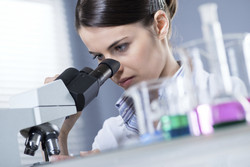Human gut microbiome – the neglected organ
Our bodies contain thousands of different bacterial species that exceed by 10-fold the number of cells. Their impact on physiology, immunity and nutrition is undisputed, but at the same time very complex. Identifying and characterising human microbial communities has been the subject of many different research studies. However, to compare data across studies and minimise variation, uniform protocols are required. The scope of the EU-funded IHMS(opens in new window) (International human microbiome standards) initiative has standardised the procedures in human microbiome research. Focusing mainly on gut microbial communities, participating groups compared and optimised standard procedures and protocols in collecting samples, sequencing microbial genomes and analysing data. All standard operating procedures (SOPs) are accessible through the IHMS website. The website registered more than 1 000 downloads of a SOP file, in total, as of the end of January 2016. Partners optimised various parameters of sampling procedure, including time and temperature of collection, storage and shipment on sample quality. Ideally, samples collected at home should be shipped within one day and preferably under cold, anaerobic conditions. The two IHMS-proposed methods of sample collection and shipment guarantee preservation of microbial species for analysis. The consortium developed 3 SOPs for DNA sequencing using data from over 20 laboratories. They also analysed and compiled this data using two SOPs to perform phylogenetic evaluation in each sample. This constitutes an important tool in the characterisation of microbial communities, one on the basis of taxonomy and the other based on function. A generic procedure has been developed to cluster the genes coded by the same genomes and to assemble full genomes at a high quality. This has enabled discovery of over 500 new species and some 5 000 smaller genetic elements, such as viruses and plasmids. IHMS research will identify how different genetic backgrounds, diets and, more generally, lifestyles affect normal gut microbial communities. Through the design of novel pharmaceuticals to improve endogenous microbial fitness, it will also help improve or restore health.







